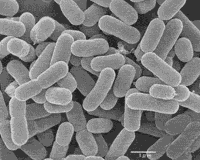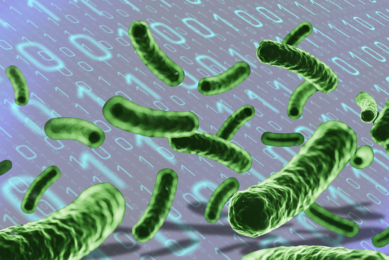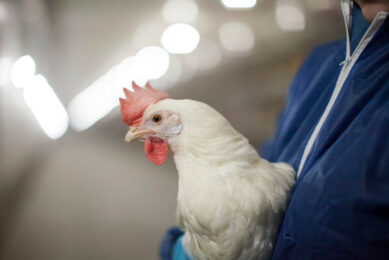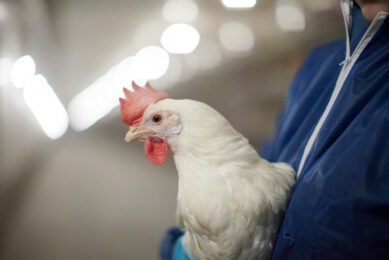Probiotics gain more interest

With the current regulatory issues associated with antibiotic growth promoters, the number of studies examining alternatives is increasing. Two areas that are receiving a great deal of interest are probiotics and functional carbohydrates.
 | While most people are aware of probiotics, functional carbohydrates may |
specific substrates for beneficial bacteria (fermentable prebiotics) | |
Problems in the past with probiotics may revolve around poor product quality
or misrepresented product with low or no viable organisms. In addition,
pelleting temperatures and preservatives applied to feed may adversely affect
probiotic preparations. Despite an inconsistent track record in the past, the
probiotics of today are more stable and of better quality than ever before.
Effect of probiotics
The benefits of lactic acid bacteria as probiotics
include the establishment or restoration of a healthy GI tract (Szajewska et
al., 2006), reduced fecal odour, acidification of the GI tract, metabolites
that may inhibit pathogens (Newman, 1990), improved immune function (Sekine
et al., 1995) and anti-carcinogenic properties. There are a number of
metabolites that have been reported to be inhibitory to a number of pathogenic
bacteria. These metabolites include organic acids, peroxides, bacteriocins and
broad-spectrum antimicrobial compounds. Trials in rodents have demonstrated that
rats supplemented with viable cultures of L. acidophilus had lower
concentrations of nitroreductase a suspected carcinogen (Goldin and Gorbach,
1977). Similar data also exist using Bifidobacteria as a supplement with the
relative rate of azoxymethane-induced aberrant crypt formation reduced in rats
receiving the Bifidobacteria (Kulkarni and Reddy, 1994). In vivo studies in
boars have shown that animals receiving L. acidophilus yogurt had
reduced concentrations of fecal coliforms compared to unsupplemented boars
(Danielson, et al., 1989). Additional studies have also examined
coliform concentrations throughout the GI tract and found similar responses.
However, studies have also found no effect associated with probiotic products in
broilers (O’Dea et al
., 2006).
Bacillus strains
Bacillus strains of bacteria have also been used as
probiotics (also with mixed results). One of the most attractive aspects of
Bacillus species is the ability of these organisms to form temperature resistant
and stable spores. Spore-forming bacteria can tolerate higher temperatures and
pressures and thus remain viable. One potential problem with the use of Bacilli
may be whether these organisms can revert to the vegetative state in the
gastrointestinal tract of the animal (Newman and Jacques, 1995). In a study
using dogs, examination of the fecal bacterial population demonstrated that both
vegetative and sporulated forms of Bacillus were present, indicating that the
particular strain used in this trial could, in fact, germinate in the GI tract
(Biourge et al., 1998). Trials in other species have demonstrated
reductions in mortality with Bacillus subtilis supplemen tation (Pollman et
al
., 1984). This may be due to the
antigenic properties of the cell wall and capsule of the Bacillus, eliciting an
immune reaction. Other investigations have demonstrated immune responses to
viable microorganisms and/or their cellular components. One limitation in a
review of probiotic effects is that bacteria are heterogeneous in nature and the
diversity of genera, species and strains make it difficult to deduce general
conclusions about probiotics as a whole. When considering probiotics it is
prudent to consider the data on the specific product.
Functional carbohydrates
Modulating the microbial community in the
gastrointestinal tract through food or feed ingredients (prebiotics), can
influence and preserve health. This is due to the stimulation of beneficial
microorganisms; however, these ingredients may also attenuate the virulence of
pathogens, as well as enhance the anti-adhesive effect against pathogenic
bacteria (Steer, et al., 2000). The first line of defence against pathogens in
the digestive tract is the oligosaccharide receptors. Pathogen receptors have
strict requirements for their ligands (proteins and glycoproteins) and often
consist of a combination of monosaccharides (Steer, et al., 2000). Many
gram-negative bacteria have surface organelles known as type 1 fimbriae, which
mediate D-mannose-sensitive binding. When mannose is added to the diet of young
chicks, the colonisation of S. typhimurium is reduced. However, the
binding strength can vary depending of the receptor composition (Bar-Shavit
et al., 1979; Salit and Gotschlich, 1977). D-mannose, yeast mannan and
alpha-methyl-D-mannoside have the ability to interfere with E. coli
binding, while other common carbohydrates have little effect. In fact,
mannosides (mannan oligosaccharides or MOS) have shown better inhibition when
compared to D-mannose, which support the hypothesis that the receptor may be an
oligosaccharide rather than a monosaccharide (Jones and Isaacson, 1983).
Depending on their structure (linear or branched), the chemical or physical
properties of natural oligosaccharides diverge with a or ß linkages and
variations in the type of monomers present (Strickling et al., 2000).
Most plant mannans have beta 1-4 linkages that are thought to have little or no
ability to bind E. coli and Salmonella compared with yeast
mannans which contain alpha mannan linkages. This is because of the differences
in carbohydrate linkages. At the same time, the specific structure and
presentation of the yeast mannan is also very important in reaping the benefits
of mannan oligosaccharide products. The diversity of benefits observed from a
specific MOS product include reductions in pathogens, improved gut health,
immune modulation and improved animal performance (Lou et al., 1995;
Pirvulescu et al., 2000; Yun-Lan et al., 2004; Finucane et
al., 1999; Spring et al., 2000; Franklin et al., 2005; Franklin
et al.,
2002; Newman
and Newman, 2001; O’Quinn, et al., 2001; |  |
Feed the beneficial bacteria
Fructooligosaccharides (FOS) have also been examined for
pathogen inhibition. The principle behind the use of FOS involves the structure
and bonding of the fructose molecules. Purified preparations of FOS have been
shown to provide a nutrient source for beneficial bacteria, such as
Bifidobacteria and certain lactobacilli. It is thought that supporting the
growth of
the beneficial bacteria will provide an in situ competitive exclusion (CE)
effect, thus improving animal health. It seems important, however, that the
concentration of non-complex fructose molecules be kept to a
minimum in order for this oligosaccharide to be successful. Oyarzabal and coworkers (1995) found that
Salmonella ssp. could not use a purified fructooligosaccharide (FOS) preparation
for growth, but were able to utilise a
commercial preparation of FOS.
 | It is assumed that probiotics, prebiotics and functional |
The authors suggest the use of lactic acid bacteria in combination with FOS
as a feasible approach to control Salmonella. Other studies have demonstrated a
reduction in Salmonella concentrations in birds challenged with S.
typhimurium with and without FOS and a CE culture. FOS alone had little
effect on Salmonella exclusion when FOS was administered after infection;
however, FOS in combination with a defined CE product had an additive effect on
Salmonella exclusion, especially when used as a prophylactic prior to Salmonella
infection (Bailey et al ., 1991).
Waldroup and coworkers (1993) found that supplementing broilers with 0.375% FOS
had few consistent effects on production parameters or carcass Salmonella
concentrations. These authors also caution of possible antagonism between FOS
and BMD. Human data for FOS is much more consistent. Hidaka et al. (1986) found
that consumption of 8-g/day FOS increased numbers of bifidobacteria, improved
blood lipid profiles and suppressed putrefactive substances in the intestine.
However, a concern with prebiotics that are fermented in the GI tract (Inulin
and FOS) is a concomitant production of excess gas, resulting in flatulence,
bloating and abdominal discomfort (Grizard and Barthoeuf, 1999).
Conclusions
While there is still much work to be carried out to demonstrate the probiotic
effect in all species, there is a growing recognition that non-digestible
oligosaccharides are more than an energy source for the hindgut microflora. They
also play a vital role in cellular metabolism, protein structure and function,
cell-to-cell communication and host immunity. In animals, the dietary inclusion
of prebiotics has been demonstrated to have a broad range of physiological
responses through modification in gastrointestinal tract activity, which can
influence physiological activity elsewhere in the body, such as energy and lipid
metabolism, endocrine function and immune status. These functional
carbohydrates, with cost of production, simple extraction technology and
potential infinite supply, will dominate the growth promoter market for the
foreseeable future.
References are available on request .
Dr Kyle Newman received his bachelor of science in physiology and Zoology
from the University of Wyoming, USA. He went on to complete his masters in
microbiology, specialising in microbial physiology and the biochemistry of
microbial growth. He received his Phd from the University of Kentucky,
specialising in nutritional microbiology. Before joining venture laboratories as
the laboratory director, Dr Newman served as director of laboratories at
Alltech, inc. he currently heads a team of scientists with research projects in
the food and agriculture industries and consultation on HACCP, feed and food
safety.
nr.1











